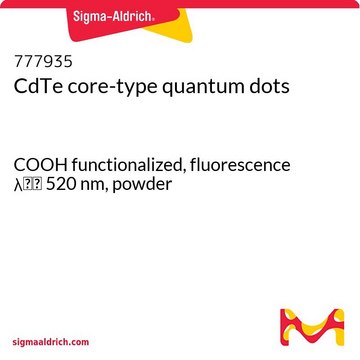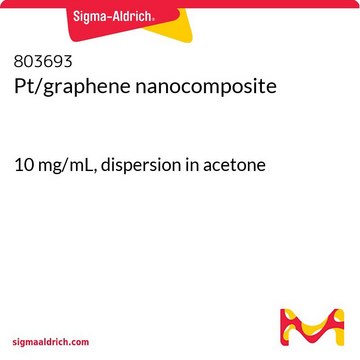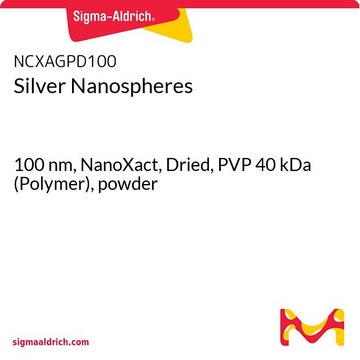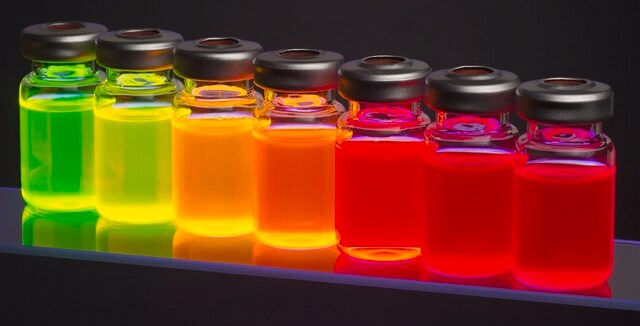900304
CdS/ZnS core-shell type quantum dots
amine functionalized, fluorescence λem 450 nm, 4 μM in PBS
Sinônimo(s):
Fluorescent nanocrystals, QDs
About This Item
Produtos recomendados
forma
dispersion
concentração
4 μM in PBS
λmax
435 nm
fluorescência
λem 450 nm
λem 450 nm±10 nm, quantum yield <50%
grupo funcional
amine
temperatura de armazenamento
2-8°C
Procurando produtos similares? Visita Guia de comparação de produtos
Aplicação
Atenção
Informações legais
Palavra indicadora
Danger
Frases de perigo
Declarações de precaução
Classificações de perigo
Carc. 1B - STOT RE 2
Código de classe de armazenamento
6.1D - Non-combustible acute toxic Cat.3 / toxic hazardous materials or hazardous materials causing chronic effects
Classe de risco de água (WGK)
WGK 3
Ponto de fulgor (°F)
Not applicable
Ponto de fulgor (°C)
Not applicable
Escolha uma das versões mais recentes:
Certificados de análise (COA)
Não está vendo a versão correta?
Se precisar de uma versão específica, você pode procurar um certificado específico pelo número do lote ou da remessa.
Já possui este produto?
Encontre a documentação dos produtos que você adquiriu recentemente na biblioteca de documentos.
Artigos
Professor Sharma and colleagues review the synthesis and applications of this novel material. This includes a discussion of the unique properties of quantum dots and their suitability for solar cell applications, along with common synthesis techniques used to develop these materials.
Professor Xiaohu Gao (University of Washington, USA) provides a overview of recent quantum dot (QD) advancements and their potential for advancing bioassay and bioimaging technologies.
Synthesis of Halide Perovskite Quantum Dots for Display Applications
Nossa equipe de cientistas tem experiência em todas as áreas de pesquisa, incluindo Life Sciences, ciência de materiais, síntese química, cromatografia, química analítica e muitas outras.
Entre em contato com a assistência técnica








